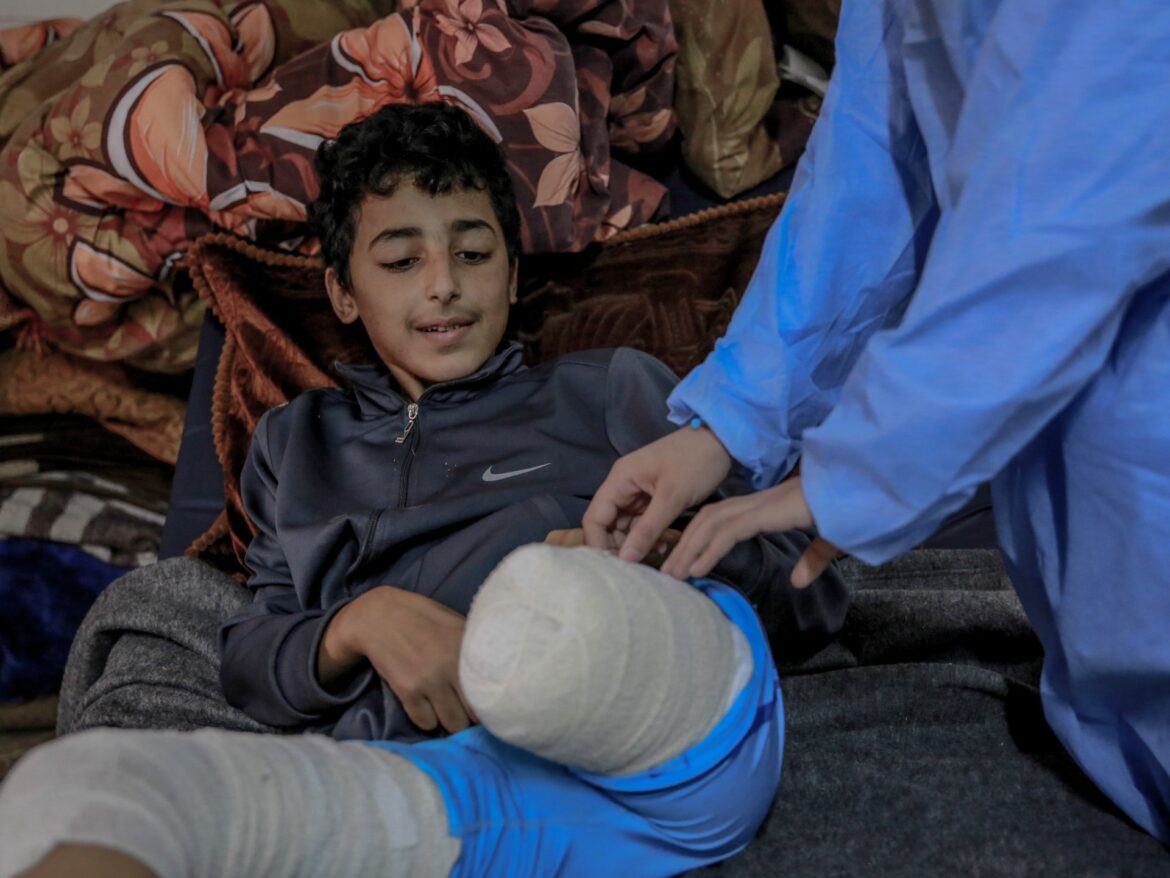The teenage girl, “Ahed,” called for help from her uncle, Doctor Hani Bseiso, as she was bleeding and crying in pain, after she was seriously injured, as a result of a shell that penetrated their house, which was besieged by Israeli forces, while the fighting was raging outside on that day in December 2023.
Dr. Bseiso (52 years old) had to leave Al-Shifa Hospital, where he works in the orthopedic department, to go home in light of the extremely dangerous situation.
Bseiso grabbed a kitchen knife, scissors, and sewing thread, then amputated his niece Ahed’s leg on the kitchen table, where her mother had just finished making bread.
“She was badly injured,” he recalled. He added, “I had to find a way to save her life without tools, without anesthesia, or anything.”
The New York Times reported in its report, titled “A Scene from Hell: The Deteriorating Conditions in Gaza Leave Many Amputees Behind,” that the “primitive” surgical operation performed by Dr. Bseiso was filmed in a video clip broadcast on the Internet, to stand as witness to the painful choices that were repeated many times. Countless in the war that destroyed the lives and limbs of the people of Gaza.
Doctors say they are astounded by the massive amount of amputations in Gaza, which puts patients at risk of infection in a place where access to medical care and even clean water is limited.
The American newspaper reports that the health care system in Gaza is not equipped to deal with the situation. Most of the Strip’s hospitals have stopped working completely, while other hospitals suffer from a severe shortage of supplies such as anesthesia and antibiotics.
Surgeons say that the lack of supplies and the volume of wounded forced them to amputate limbs that could have been saved elsewhere, but they stress that loss is inevitable in both cases, because amputations require extreme care, and often more than one surgical operation.
The American newspaper quotes Dr. Anna Jilani – an orthopedic surgeon in Liverpool, England, who spent two weeks in Al-Aqsa Hospital in central Gaza in March – saying, “There are no good options there. Everything requires the follow-up that we do, and there are none.”
Because complete sterilization is difficult in Gaza’s hospitals, where bandages and blood bags are running out, and patients are lying on dirty beds, Dr. Jilani believes that it is “an ideal environment for infection to spread,” adding that patients could have survived but died of infection because “we did not have option”.
For her part, Dr. Seema Jilani – who worked as a senior emergency health advisor at the International Rescue Committee, a relief organization – says that this led to “a scene from hell full of terrifying nightmares,” and although she worked in many conflict areas, she said that she could not Putting the pictures she took during the two weeks she spent in Gaza out of her mind.
Among the sad scenes that the New York Times reported in its report from inside the hospital were a six-year-old boy with burns covering his body and a severed foot, a girl with amputated feet, and a young boy whose right arm and right leg were torn apart and who appeared to be bleeding, as he needed a chest tube, but nothing happened. There was no tube, no stretchers, and he was given nothing to relieve his pain.
According to the report, there are no accurate figures for the number of Gazans who lost their limbs in this war, and UNICEF estimated, in November, that nearly a thousand Palestinian children had one or both legs amputated, and recently said, “It is very likely that This number has been far exceeded in the past 4 months.”
Dr. Bseiso was unable to sterilize the kitchen knife he used to amputate his niece’s leg that December day, and all he used was soap and water.
He said that the situation was not safe to transfer Ahed to the hospital until after 4 days, where she underwent a number of surgical operations before she was eventually evacuated to Egypt, and then to the United States to receive treatment, with the help of an American charitable foundation.
He added, “In circumstances other than these, there was a 20% chance that Ahed would keep her leg, but under these circumstances, her chance was literally non-existent.”



